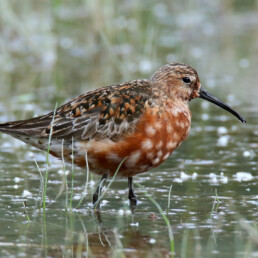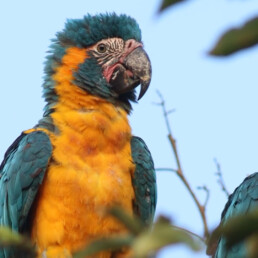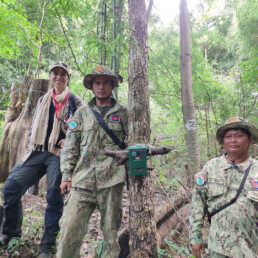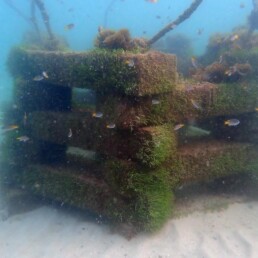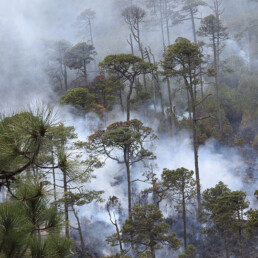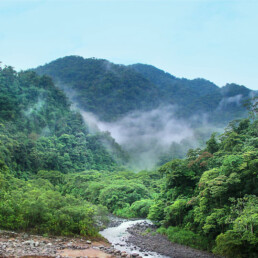The Spectacled Bear
Gardener of the Andes
The Spectacled Bear , also known as the Andean bear, is the only bear species native to South America! Found in the cloud forests and grasslands of the Andes, these bears play a vital role in forest regeneration
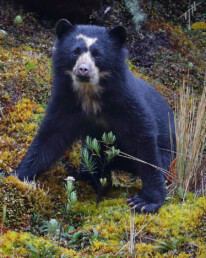
Climate Adaptation - Moving Up
In the context of climate change, spectacled bears play a unique role by moving seeds to higher elevations as they travel up mountains in search of food. This helps plants adapt to warming temperatures by establishing themselves in cooler, higher-altitude habitats. By facilitating this upward migration, spectacled bears are helping ecosystems adjust to changing climates.
Our partner Conservación Amazónica (ACCA) works to restore and rewild the upper limits of Amazonian cloud forests.
Sowing the Forest from Above
Hyacinth Macaw
Feathered Forest Planter
The hyacinth macaw plays a vital role in maintaining South American ecosystems. With their powerful beaks, these macaws crack open hard-shelled nuts like those of palm trees, consuming some and dispersing others. Seeds dropped by hyacinth macaws often germinate far from the parent plant, fostering genetic diversity and enabling forest regeneration.
The Hyacinth Macaw thrives in the territory of the Kayapo People under the protection of the Kayapo-NGO alliance.
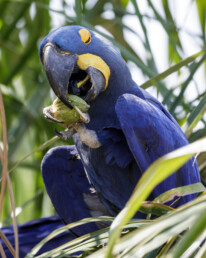
Restoring the Galapagos Islands
Floreana Tortoise
Gardener of the Galapagos
Our partners at Jocotoco are dedicated to reintroducing the Floreana tortoise to the Galápagos Island of Floreana. This return is more than just symbolic; the tortoises will serve as environmental engineers, helping to restore the island’s ecosystem and support other endangered species. By dispersing seeds, moving soil, and grazing on lower vegetation, they create space for species like the Floreana Mockingbird and the Little Vermilion Flycatcher to thrive.
Our partners at Jocotoco are leading one of the most ambitious island rewilding efforts in the world.

Dung for Life
African Forest Elephants
The Mega-gardener of the Forest
African forest elephants play a crucial role as ecological engineers and mega-gardeners. To fuel their large bodies, they consume vast amounts of vegetation, which allows them to significantly alter the structure of the forest. Their dung acts as a powerful fertilizer, and the seeds from fruits or acacia pods pass through their digestive systems undigested, helping to disperse plant species and promote forest regeneration.
Strong Roots works with communities near protected and community forests to support conservation and the protection of forest elephants.

The most impressive ecosystem engineers of the insect world
Leafcutter Ants
Underground Architects
By cutting and transporting leaves to their nests, leafcutter ants cultivate fungi, which serve as their primary food source. This activity enriches soil with nutrients and aerates it through their extensive underground networks. Their selective harvesting of vegetation shapes plant communities, preventing some species from dominating while promoting diversity. Leafcutter ants not only maintain soil health but also enhance the resilience of tropical ecosystems, benefiting countless species that rely on these habitats.

